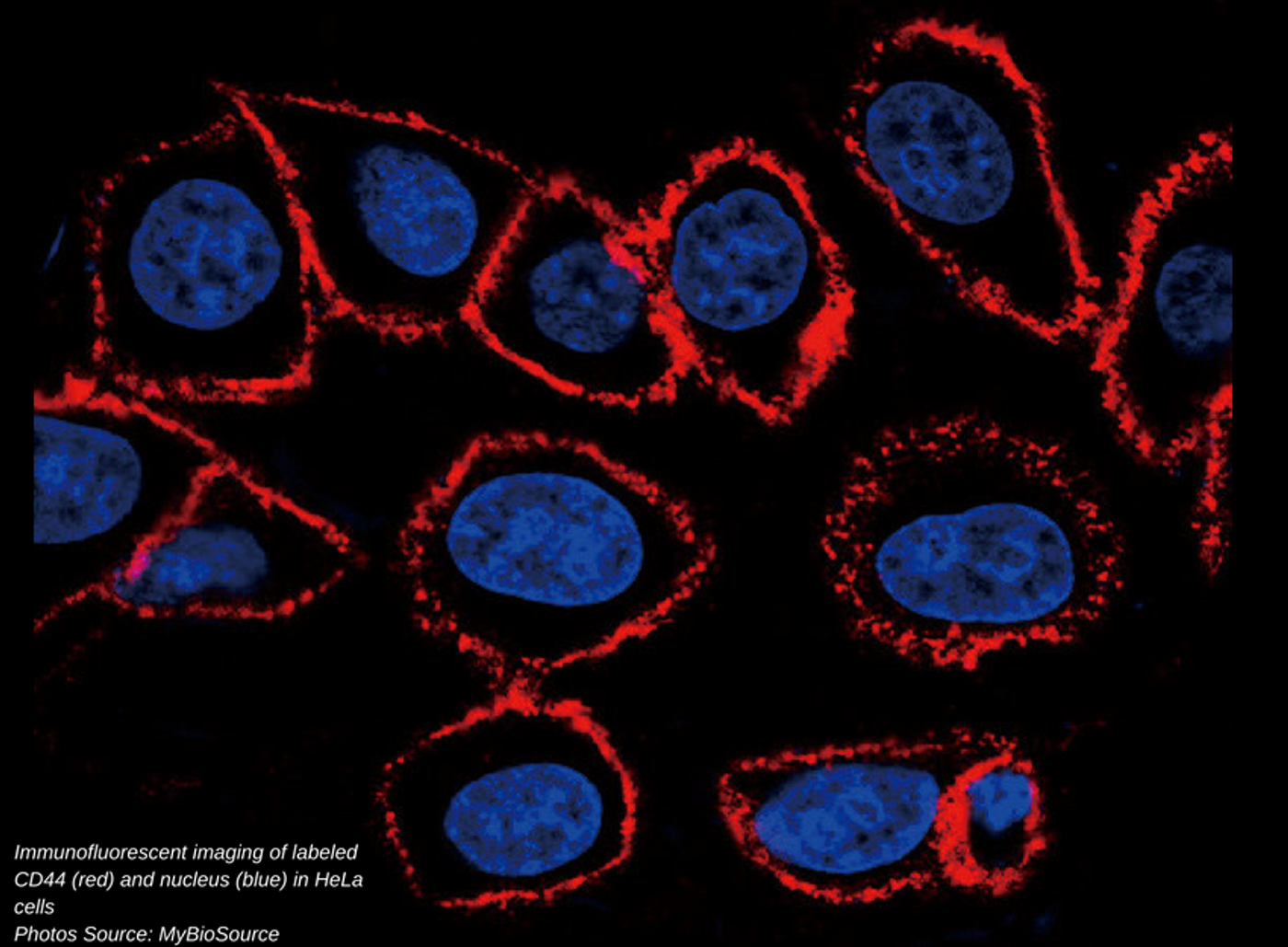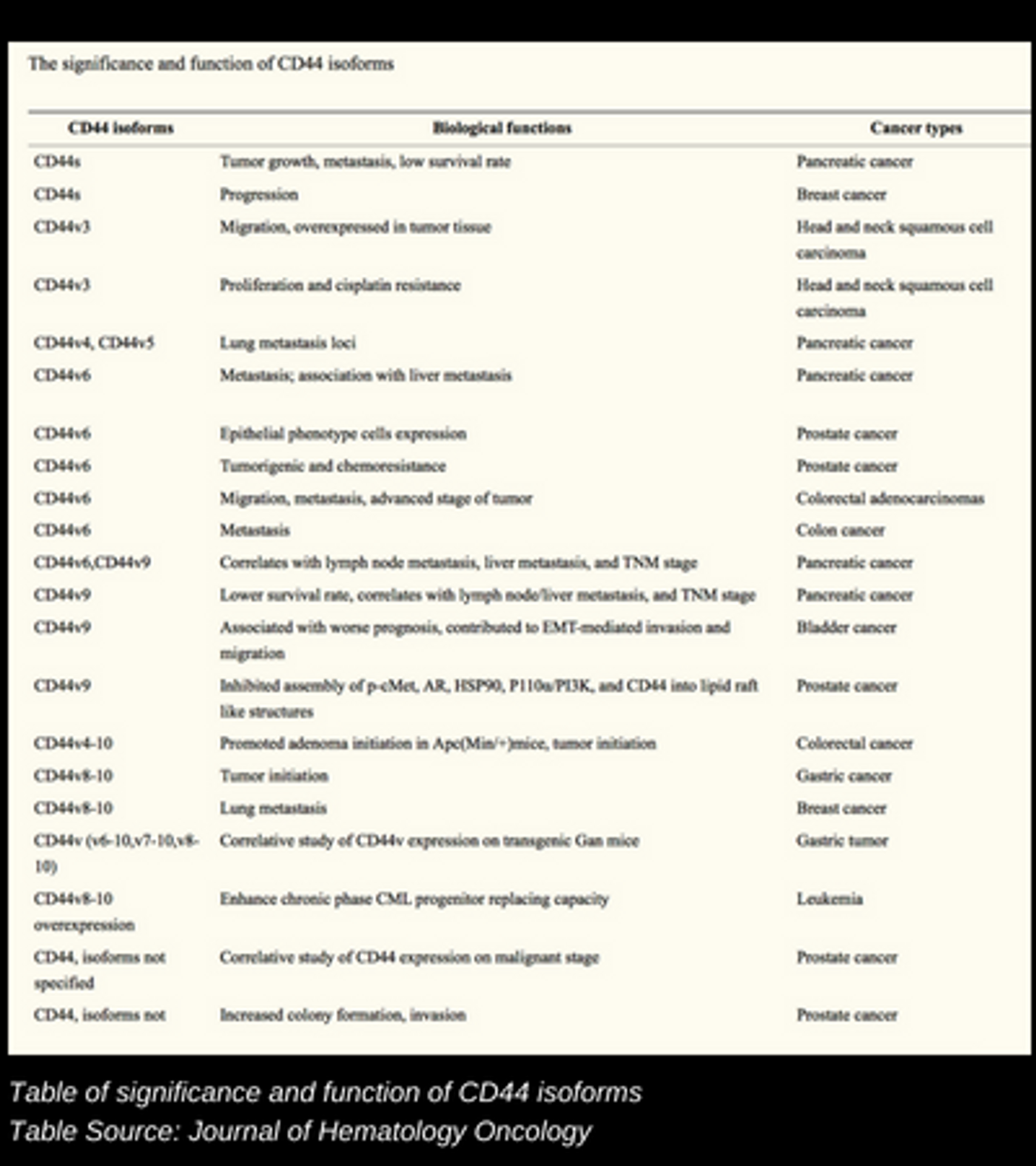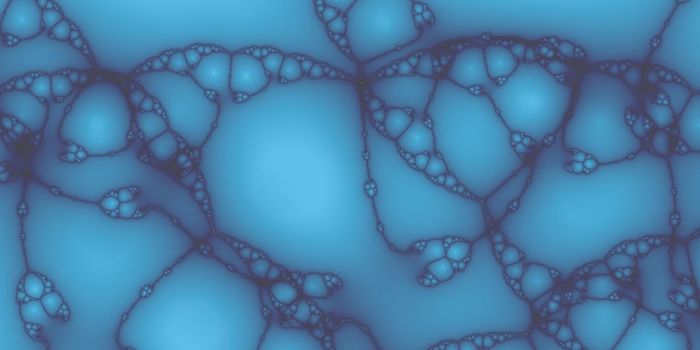The molecule called CD44 is a transmembrane glycoprotein involved in cell to cell adhesion, interactions, and signaling. It is also a receptor of hyaluronic acid (HA) which is mechanistically involved in cell adhesion, cellular migration, survival, and cell proliferation. The letters “CD” stand for “cluster of differentiation” which mean this protein is part of a large family of cell surface molecules expressed by cells for a particular purpose. Some CD proteins are specific for a single cell type but most often, CD molecules are found on multiple cell types within the body. These surface proteins are used as “markers” for scientists and providers to provide information about cellular involvement in diseases such as cancer.
CD44 is not just a single unique surface marker. It is found to be overexpressed in many cancers which contribute to their ability to proliferate and spread. While there is information in the literature about CD44 and the cellular biology related to its processes, signaling pathways, gene sequence, expression, and action in the body, there is still much that is not well understood. There are groups researching this particular transmembrane glycoprotein because of the potential connection it could have as a therapeutic target for cancer immunotherapy.
The gene for CD44 is located on chromosome 11, specifically 11p13, in humans. Interestingly in mice, this gene is located on chromosome 2. The CD44 gene in humans has 19 exons with the first and last 5 exons being identical. Expression of this gene results in a protein with multiple variants based on the combination of spliced exons involved beyond the 10 identical sequences flanking either end. The molecular protein structure of CD44 includes binding motifs that are altered based on the expressed spliced variants. CD44 variants with altered binding motifs promote increased interaction within the cellular environment and the structural protein changes create co-receptor opportunities for growth factors and protection from destruction by the immune system. CD44 is believed to promote tumorigenesis and is already used as a molecular marker for cancer cell identification. CD44 is found on stem cells and CD44 variants, or isoforms, maintain a malignant cell’s “stemness” characteristics, thus furthering tumor proliferation, cellular replication, and malignant cell growth.
Current research focuses on approaches including: neutralization of CD44 through the use of antibodies, introduction of short hairpin RNAs (shRNA) which silence gene expression through RNA interference, introduction of ectodomain blocking molecules specific to CD44 variants, and a few others.
A recent publication in the Journal of Hematology Oncology outlines the significance and role of CD44 in cancers and includes details about the multitude of variants or CD44 isoforms involved in progression of specific cancer types based on current literature available.
Source: Journal of Hematology Oncology, NIH-US National Library of Medicine, Introductory Immunology, The Jackson Laboratory MGI, Labome, Stem Cells and Translational Medicine Journal,










